Jenny Sabin’s brainy AI sculpture learns to smile at Microsoft HQ
Pioneering mathematician Ada Lovelace inspires the giant, semi-sentient being that has landed in Microsoft's Redmond campus
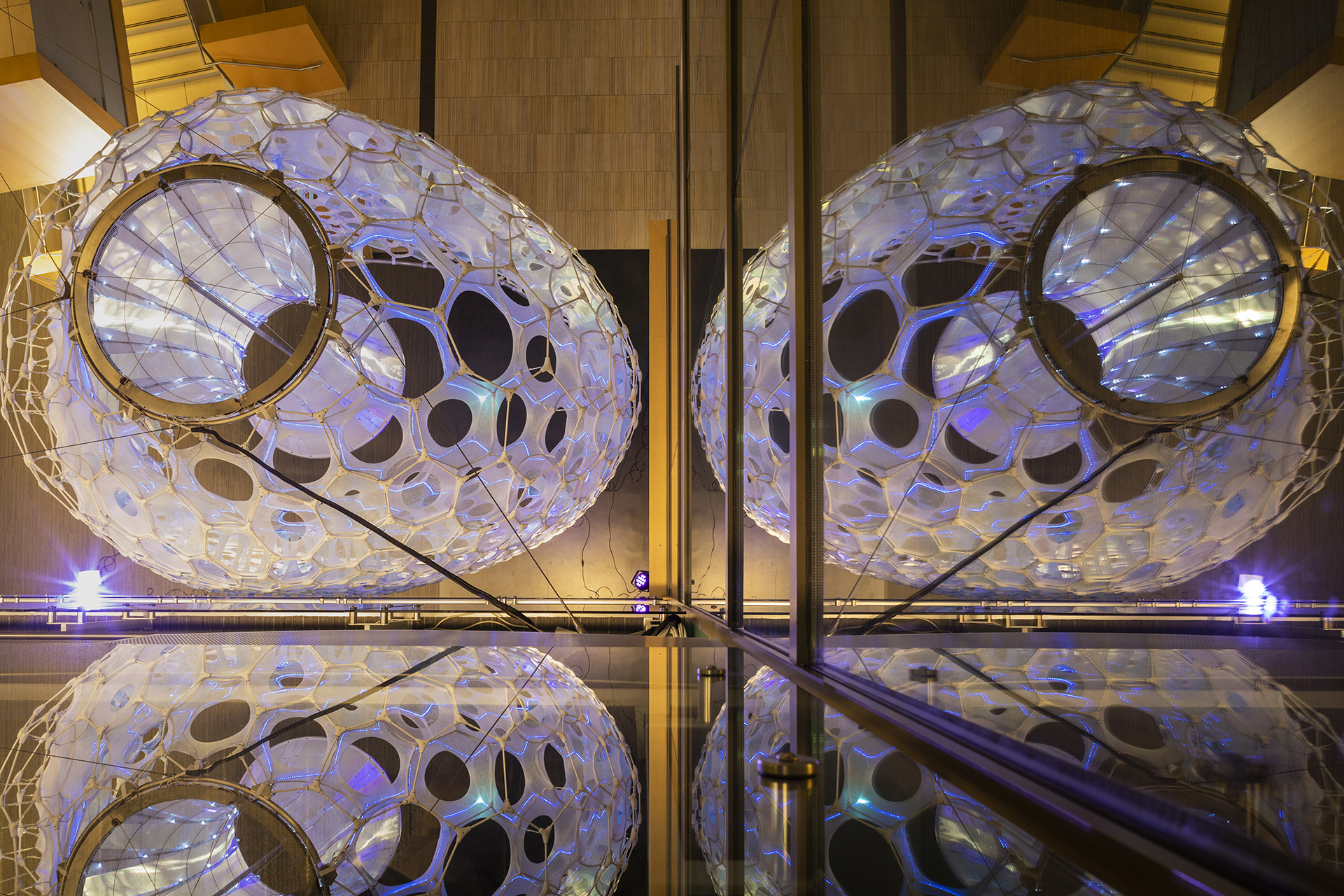
What could a ‘hive mind’ actually look like? It is a question that defines the latest collaboration between Microsoft and experimental architectural designer Jenny Sabin, as part of an Artist in Residence programme that seeks to explore the intersection of the arts, humanity and technology. The result is a responsive AI sculpture installed in the atrium of the company’s campus in Redmond, WA, which would not look out of place on the set of a sci-fi thriller.
The ellipsoid pavilion – which has more than a passing resemblance to a human brain – is formed from a fibreglass exoskeleton containing an intricately woven network of photoluminescent fibers. This light-emitting material has the capacity to pulsate in an array of colours that react to the facial expressions of the people that surround it. This real-time response is achieved by collecting data from several cameras, which scan the emotions of passers-by and catalogue them as either anger, contempt, disgust, fear, happiness, neutral, sadness or surprise. In effect, the interpretation of this data allows the sculpture to ‘smile back’ at its audience (or perhaps sneer), as well as pulsate light patterns in relation to physical movement, crowd size and noise levels.
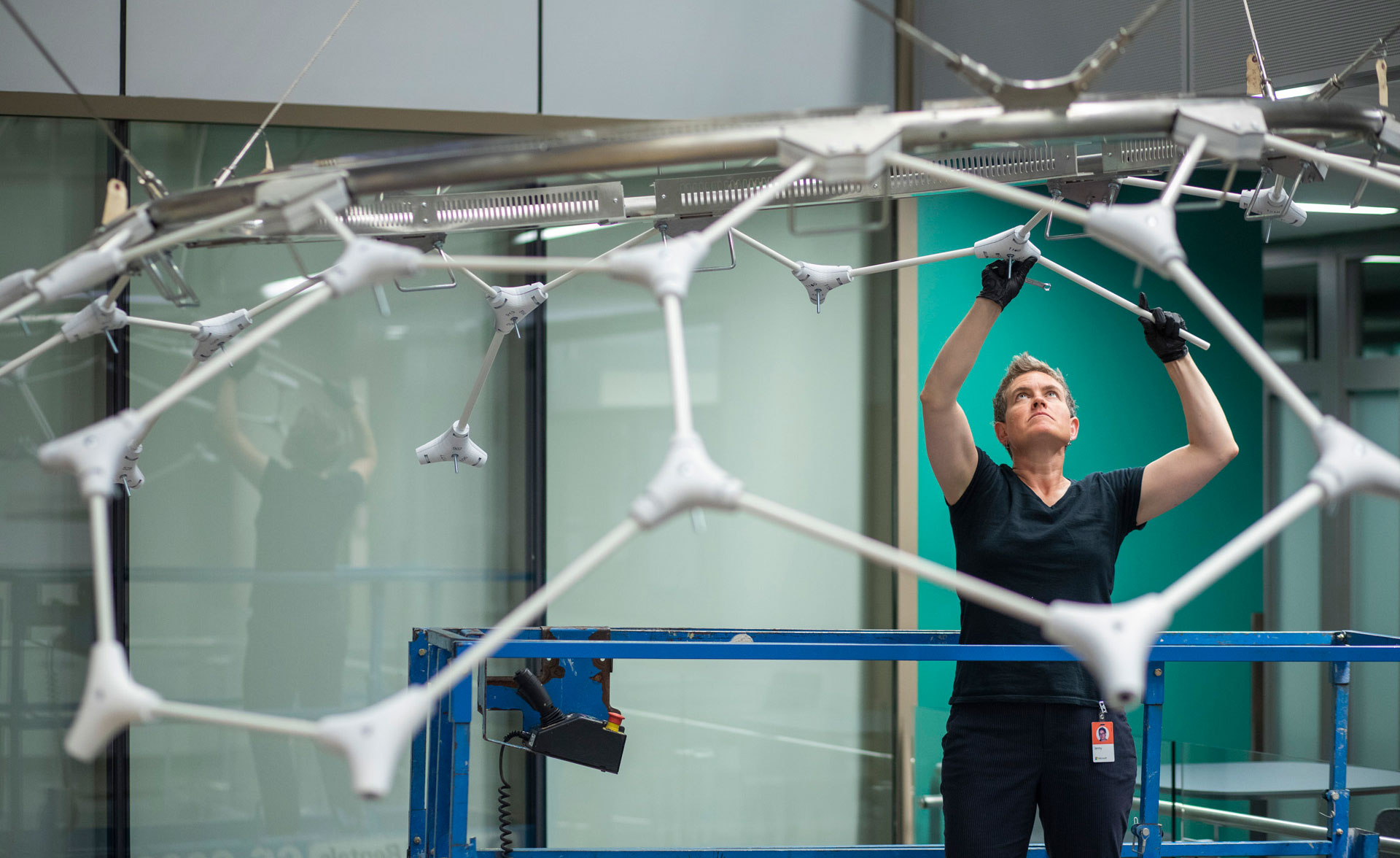
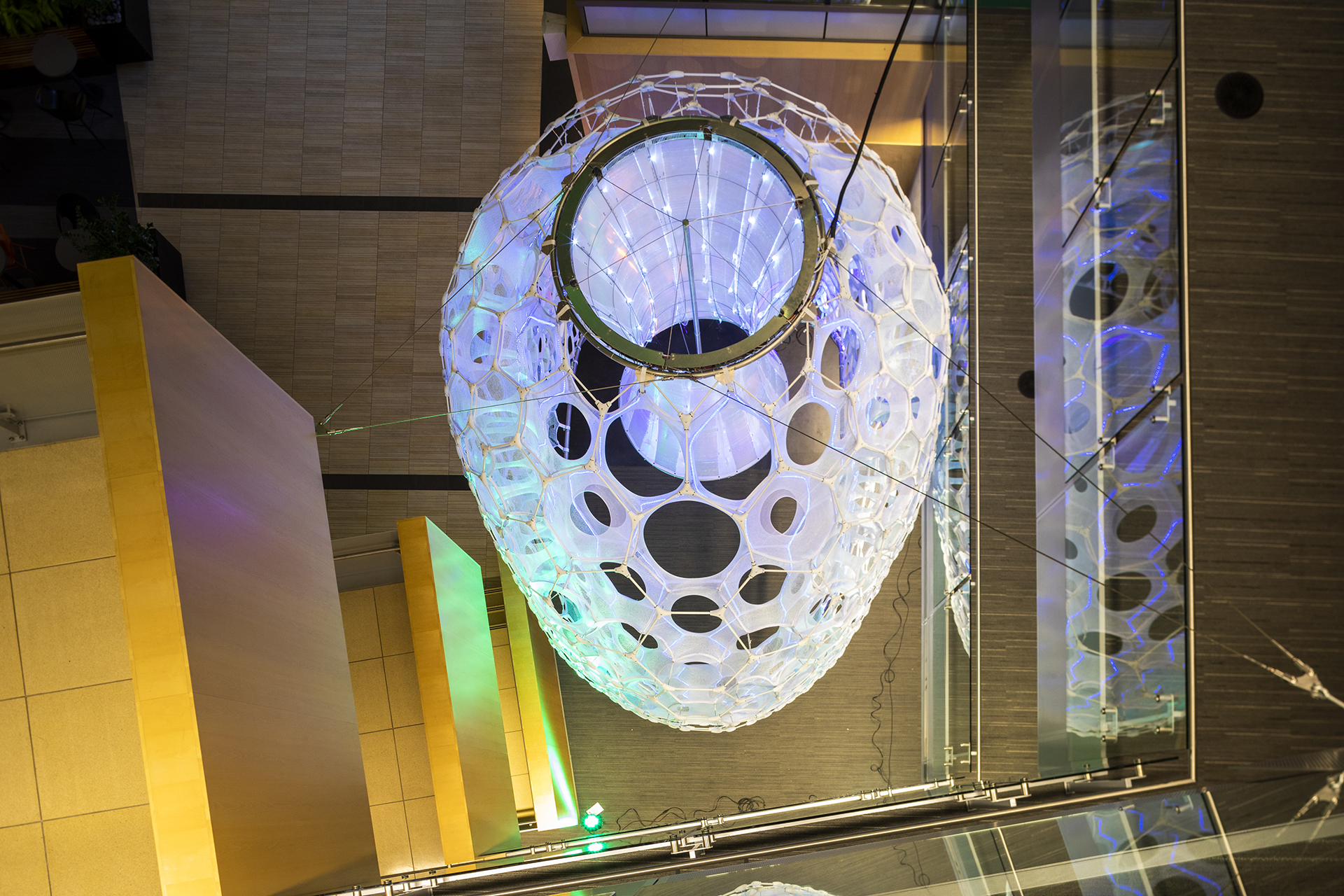
Top, Jenny Sabin installing ADA at the Microsoft campus. Bottom, the finished work
This astonishing semi-sentient creation takes inspiration from the work of Ada Lovelace, the pioneering mathematician and computer programmer who foregrounded our digital age.
Knitting is one of the earliest forms of three-dimensional printing and is defined by a form of binary coding that underpinned Lovelace’s research, so it is fitting that the process should play a crucial part in this new technological experiment. Sabine also notes that ‘the project features soft forms that are more feminine versus masculine, and that’s a paradigm shift in architecture.
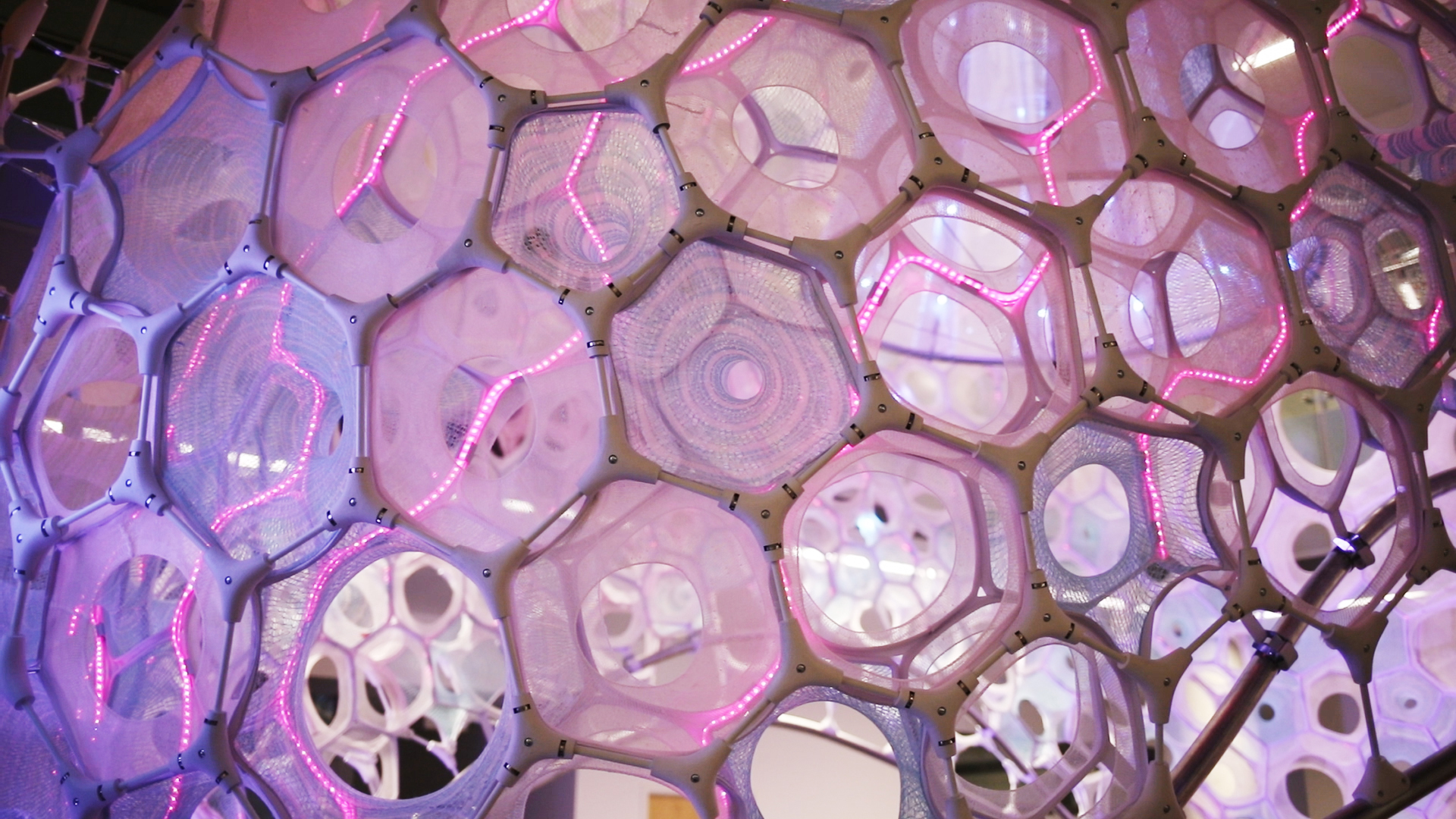
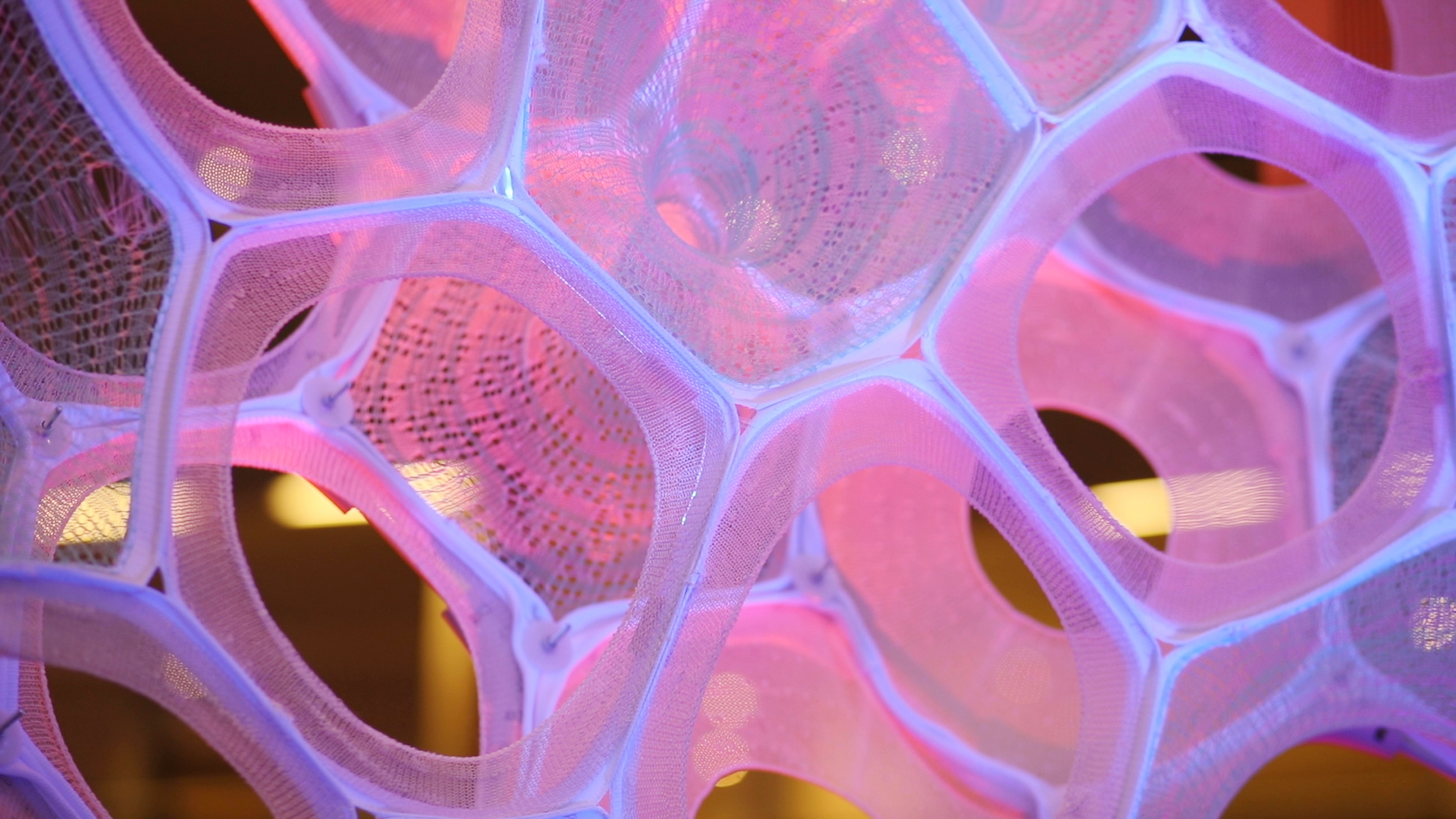
Detail views of Ada, by Jenny Sabin
Though one should be wary of defining an emotive sculpture as intrinsically ‘feminine’, the collaborative nature of ADA does follow in the footsteps of female thinkers who have used hybrid forms of design to push the parameters of how we interact in the modern age, such as April Greiman and Susan Kare. Both of these designers place human experience at the centre of their practice, and Sabine does the same.
The ability to creatively interpret live data in a way that resonates aesthetically with an audience is no mean feat, but it would be nothing without the people who, for want of a better analogy, are the source material. Sabine hopes people will realise that their engagement drives the various glowing patterns that ebb and flow through ADA, and that ‘the project begins to gain its own life’ through their interaction.
INFORMATION
Wallpaper* Newsletter
Receive our daily digest of inspiration, escapism and design stories from around the world direct to your inbox.
-
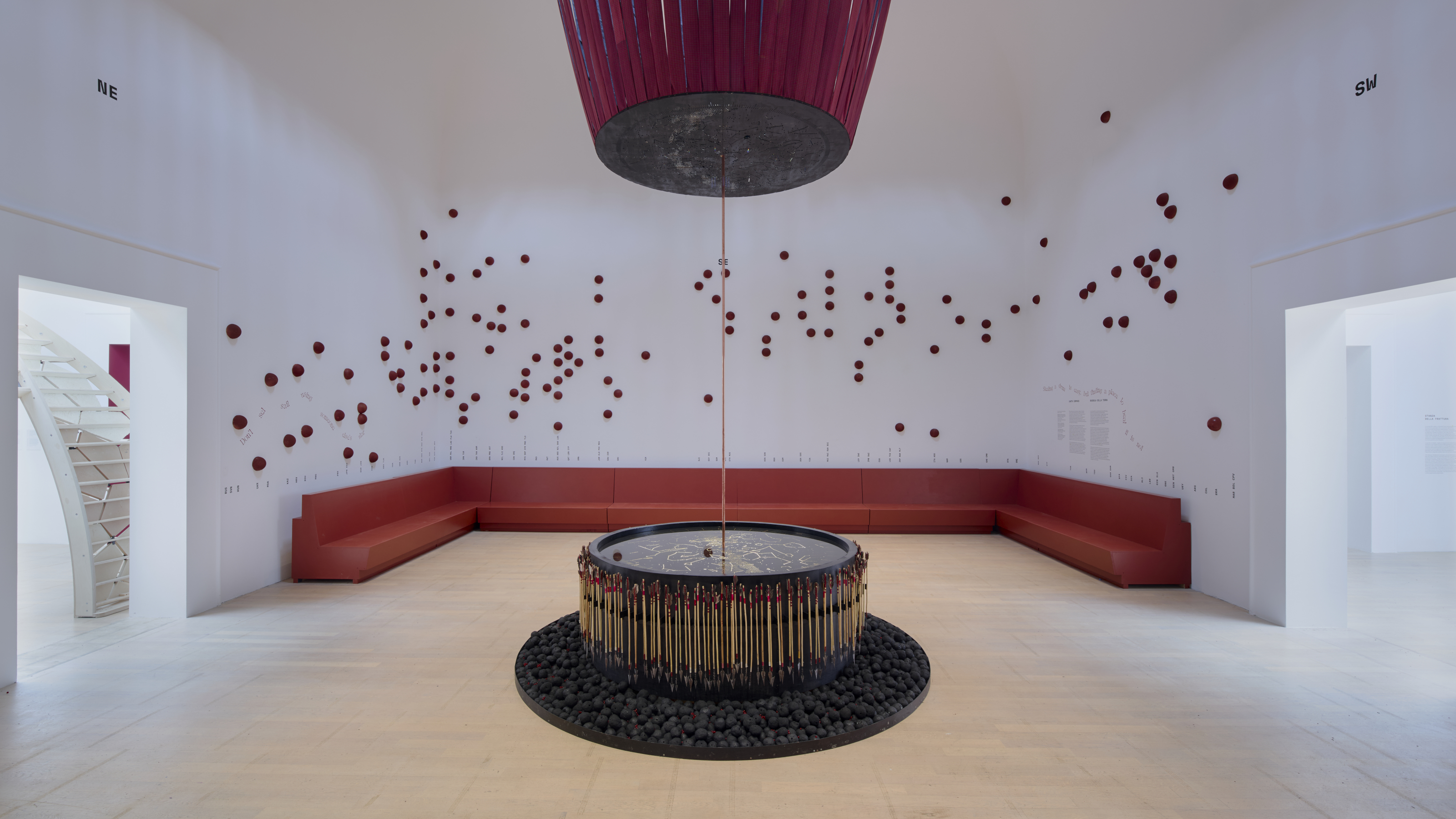 The 2025 British Pavilion in Venice offered up a Geology of Britannic Repair
The 2025 British Pavilion in Venice offered up a Geology of Britannic RepairThe 2025 British Pavilion in Venice is curated by an Anglo-Kenyan team of architects and designers; titled 'GBR: Geology of Britannic Repair', it explores the landscape of colonialism, its past, present and futures
-
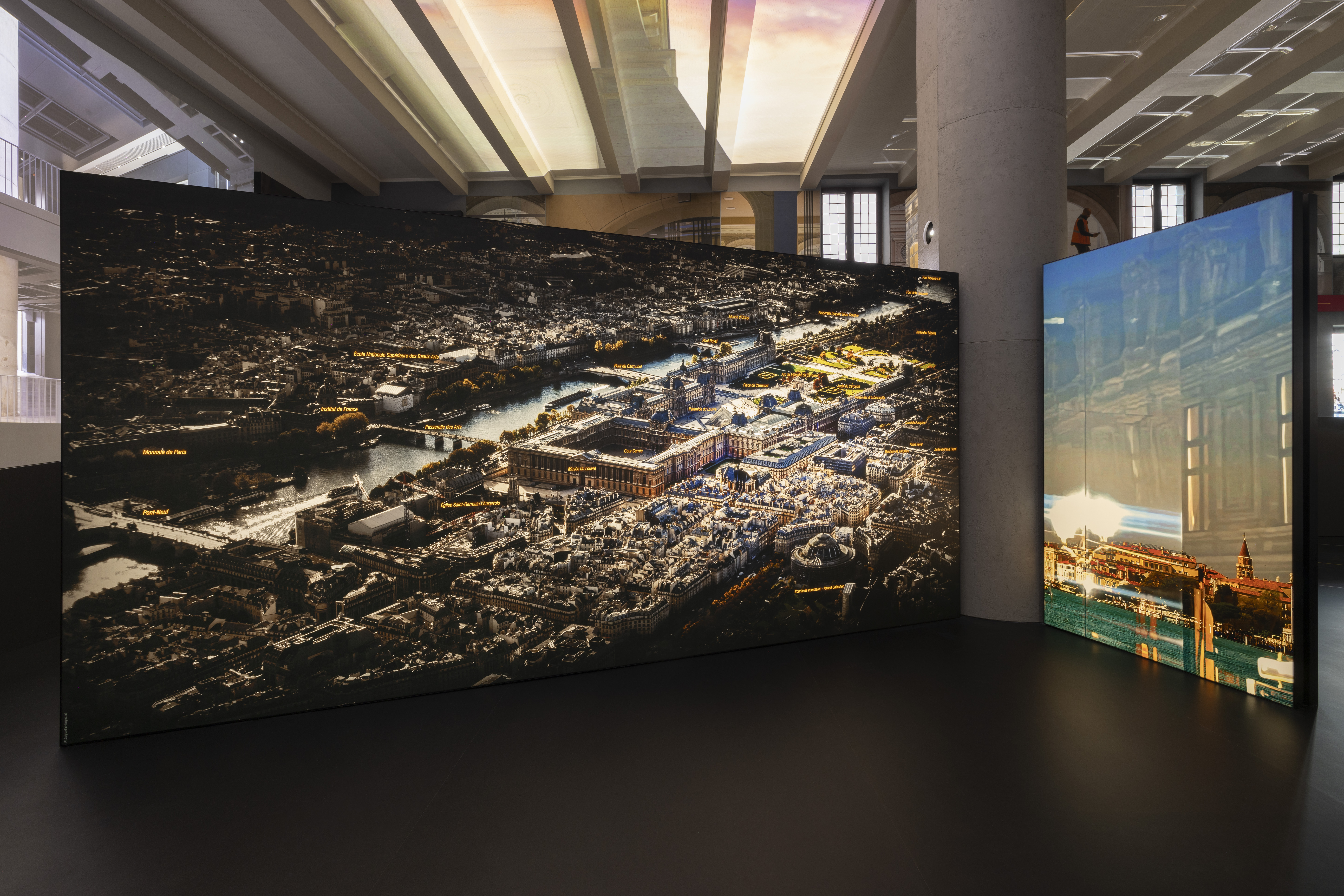 A Venice sneak peek into the new Fondation Cartier pour l’art contemporain by Jean Nouvel
A Venice sneak peek into the new Fondation Cartier pour l’art contemporain by Jean NouvelA new home for Fondation Cartier pour l’art contemporain by Jean Nouvel will open later this year in Paris; in the meantime, the Venice Architecture Biennale 2025 offered the perfect platform for a sneak preview of what's to come
-
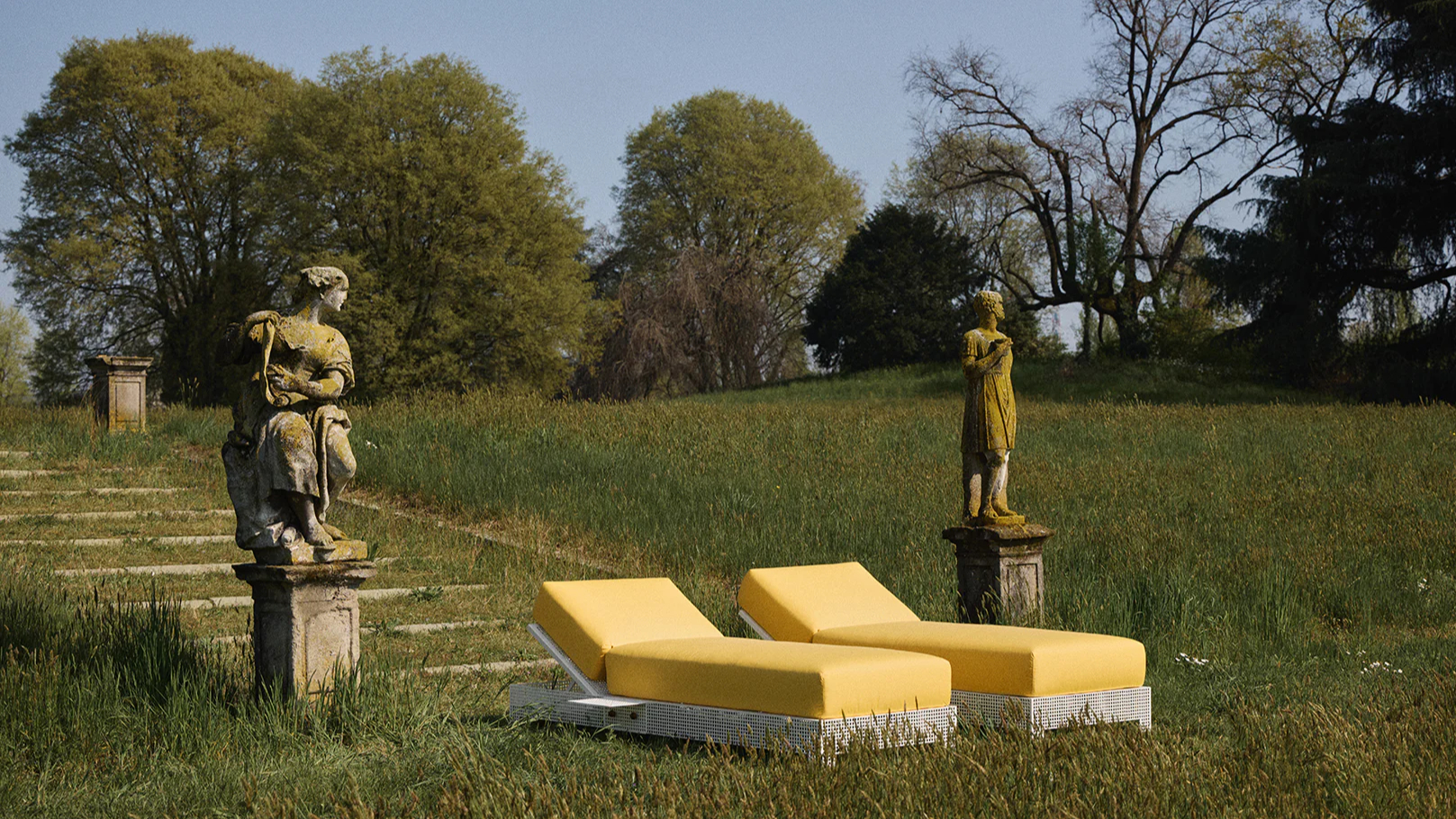 Let's go outside: ten outdoor furniture ranges we love
Let's go outside: ten outdoor furniture ranges we loveOur round-up of outdoor furniture brings together work by leading designers and studios, blending contemporary forms with enduring materials designed to elevate open-air living
-
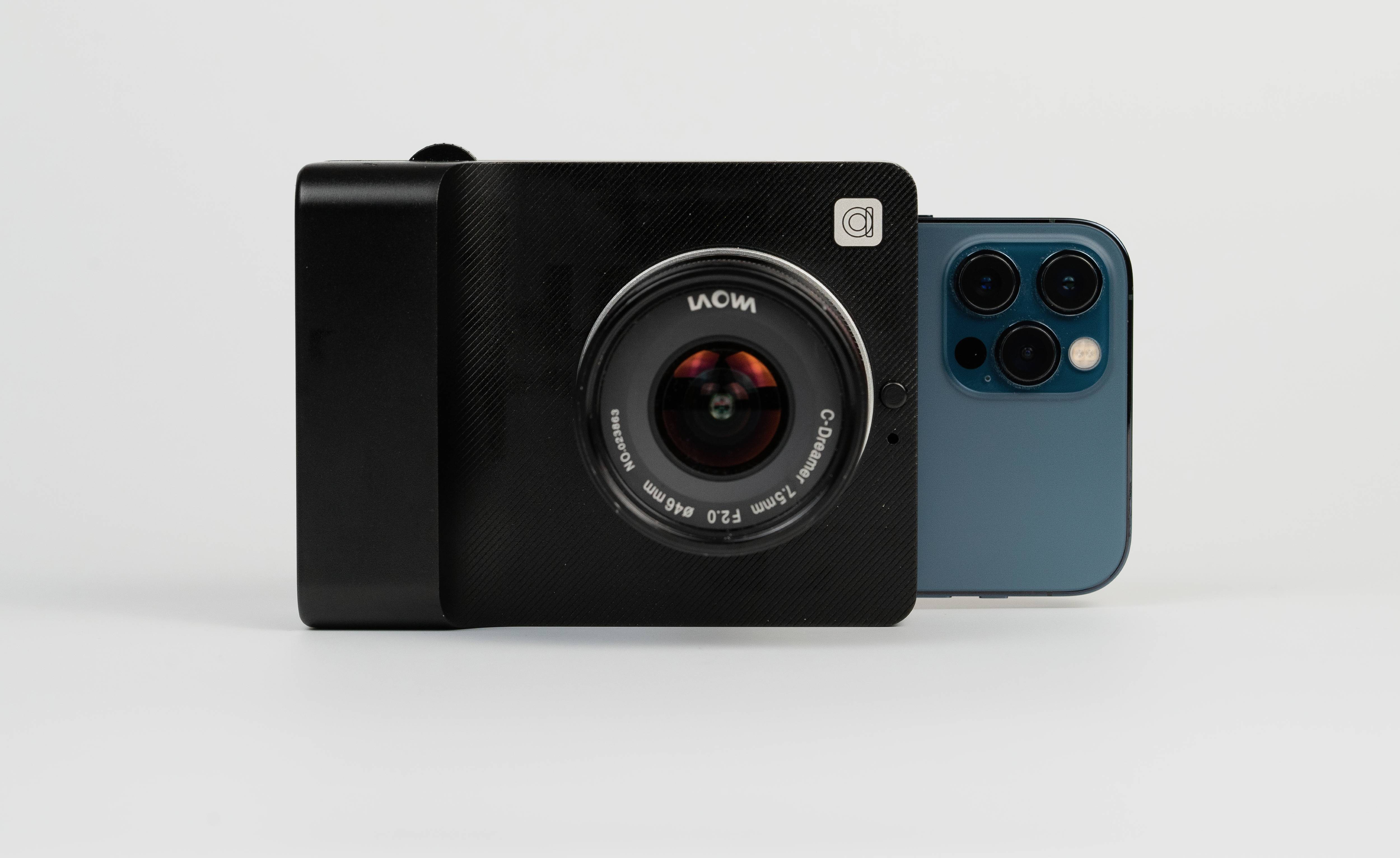 Alice Camera is a clever blend of AI, high-quality optics, and smartphone intelligence
Alice Camera is a clever blend of AI, high-quality optics, and smartphone intelligenceLaunching in summer 2022, the Alice Camera is designed to offer ‘the intelligence and user experience of a phone but with the image quality of a DSLR’
-
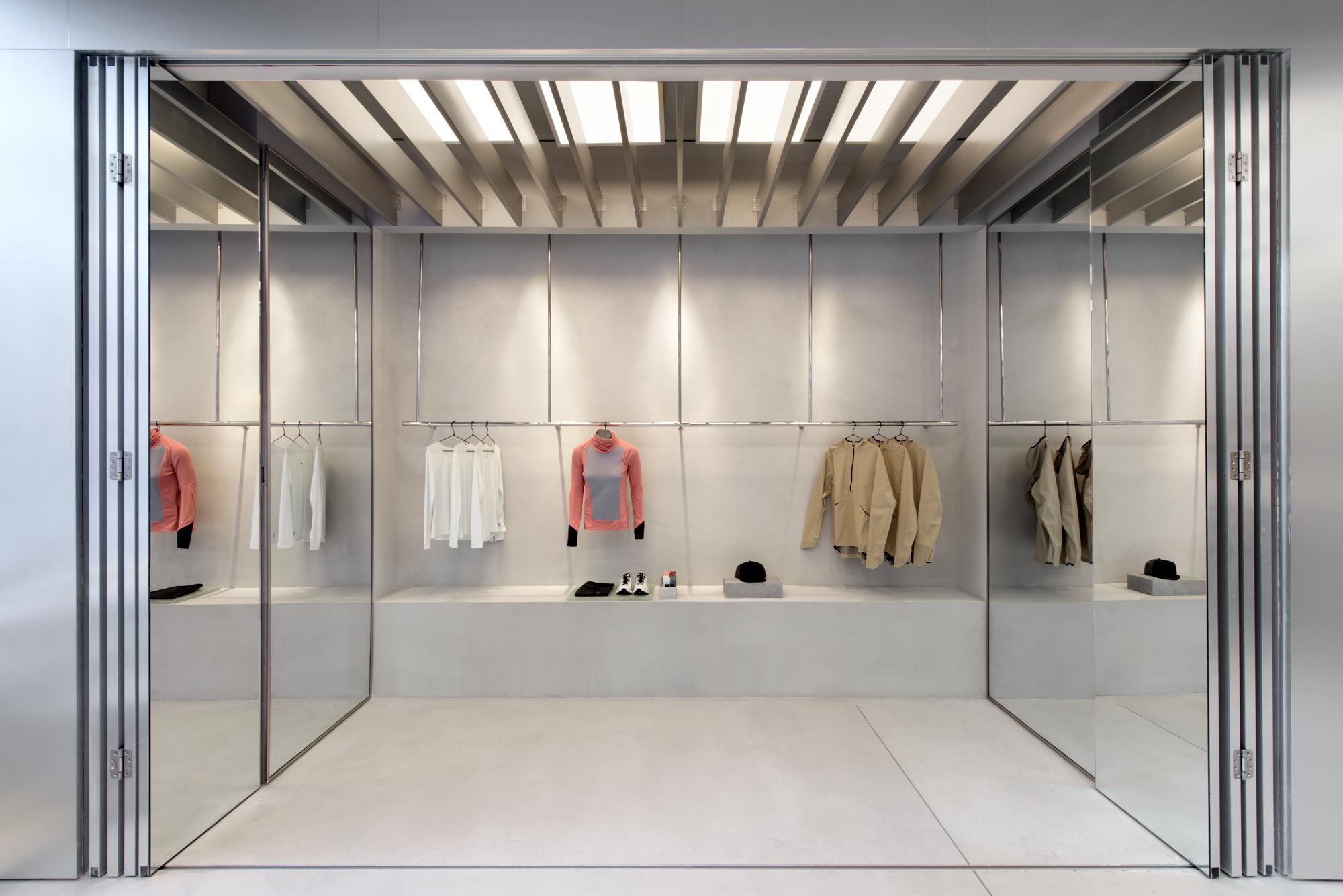 Running brand On fixes the ‘broken experience' of shoe shopping
Running brand On fixes the ‘broken experience' of shoe shoppingIn a year that pressed pause on the world, high-tech running brand On only gained momentum
-
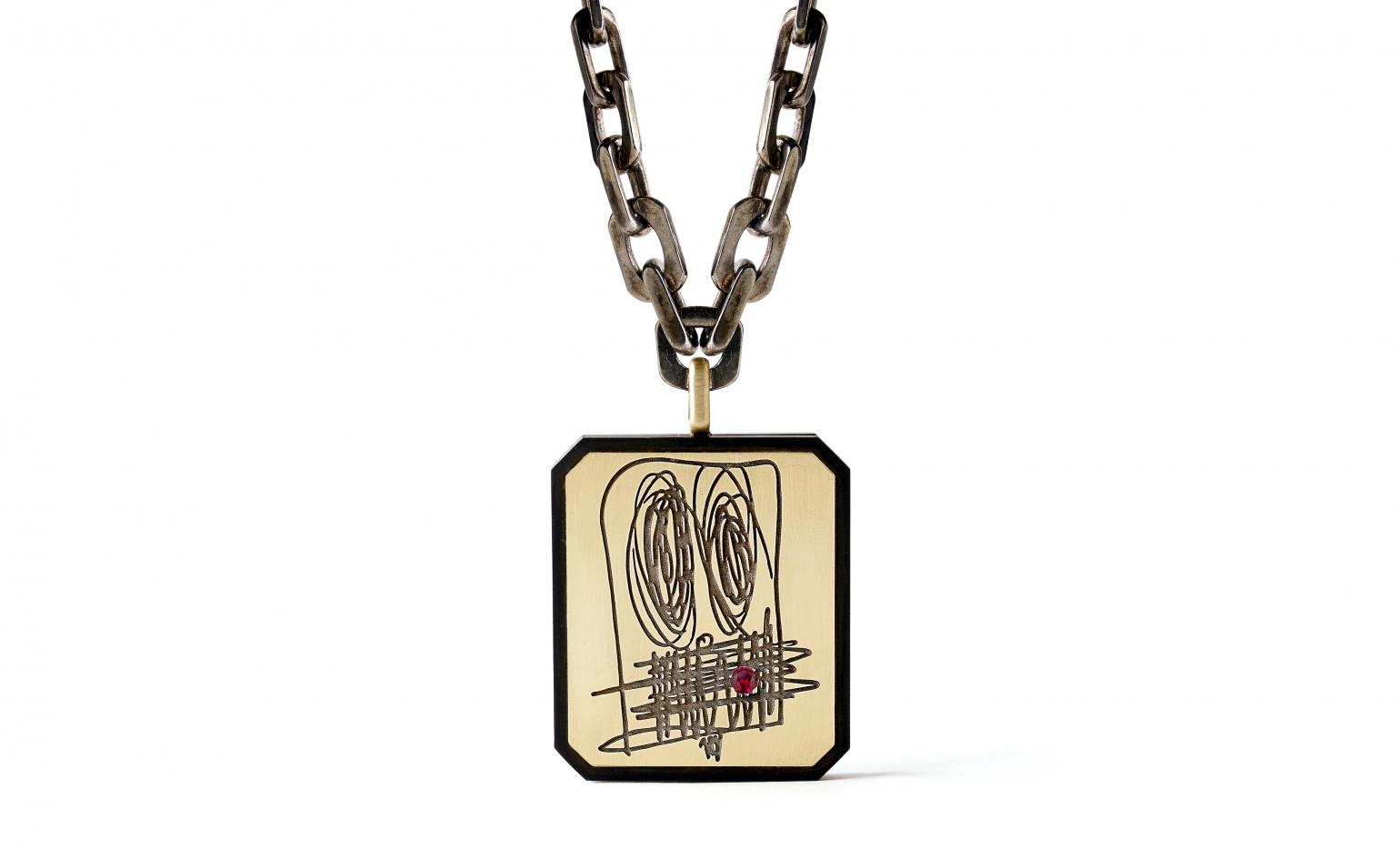 Rashid Johnson unveils gender-fluid jewellery collection
Rashid Johnson unveils gender-fluid jewellery collectionArtist Rashid Johnson collaborates with Lizworks on a fine jewellery collection featuring artworks from his Anxious Men series. This article is a preview from Wallpaper's October 2020 issue, on newsstands from 17 September
-
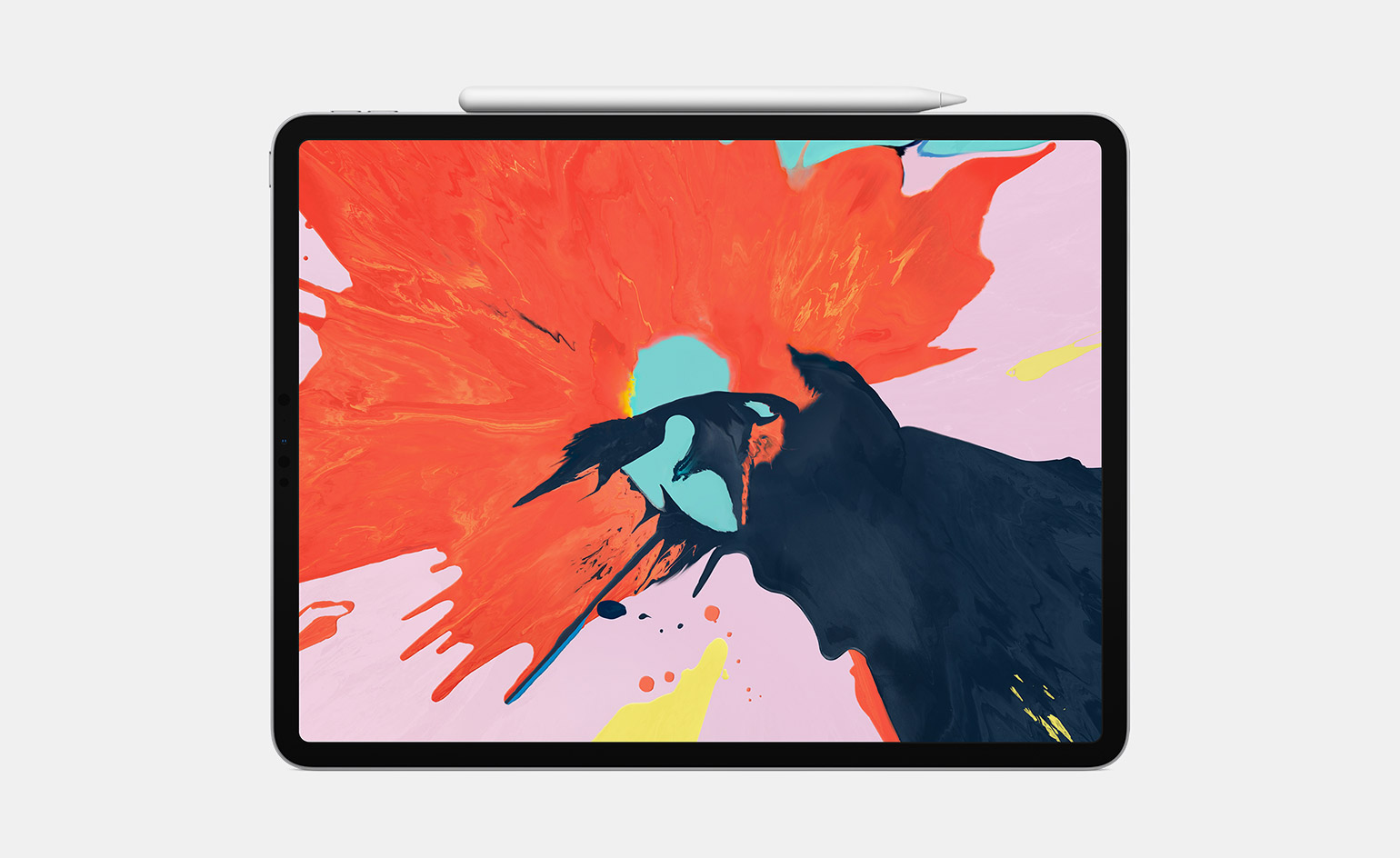 Apple announces new iPad Pro with full-screen design and more at special event
Apple announces new iPad Pro with full-screen design and more at special event -
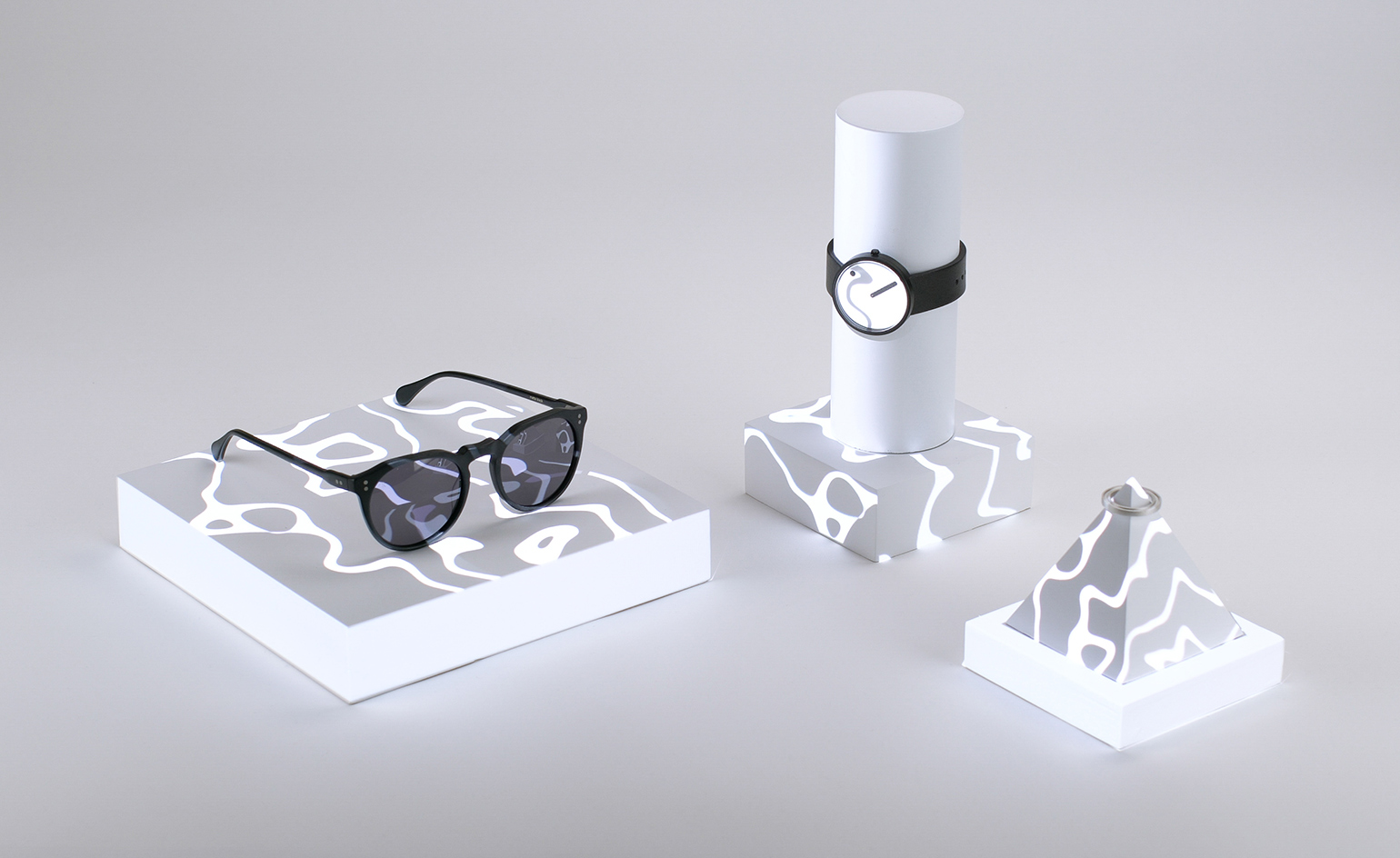 The world’s first augmented reality tool for designers is headset-free
The world’s first augmented reality tool for designers is headset-free -
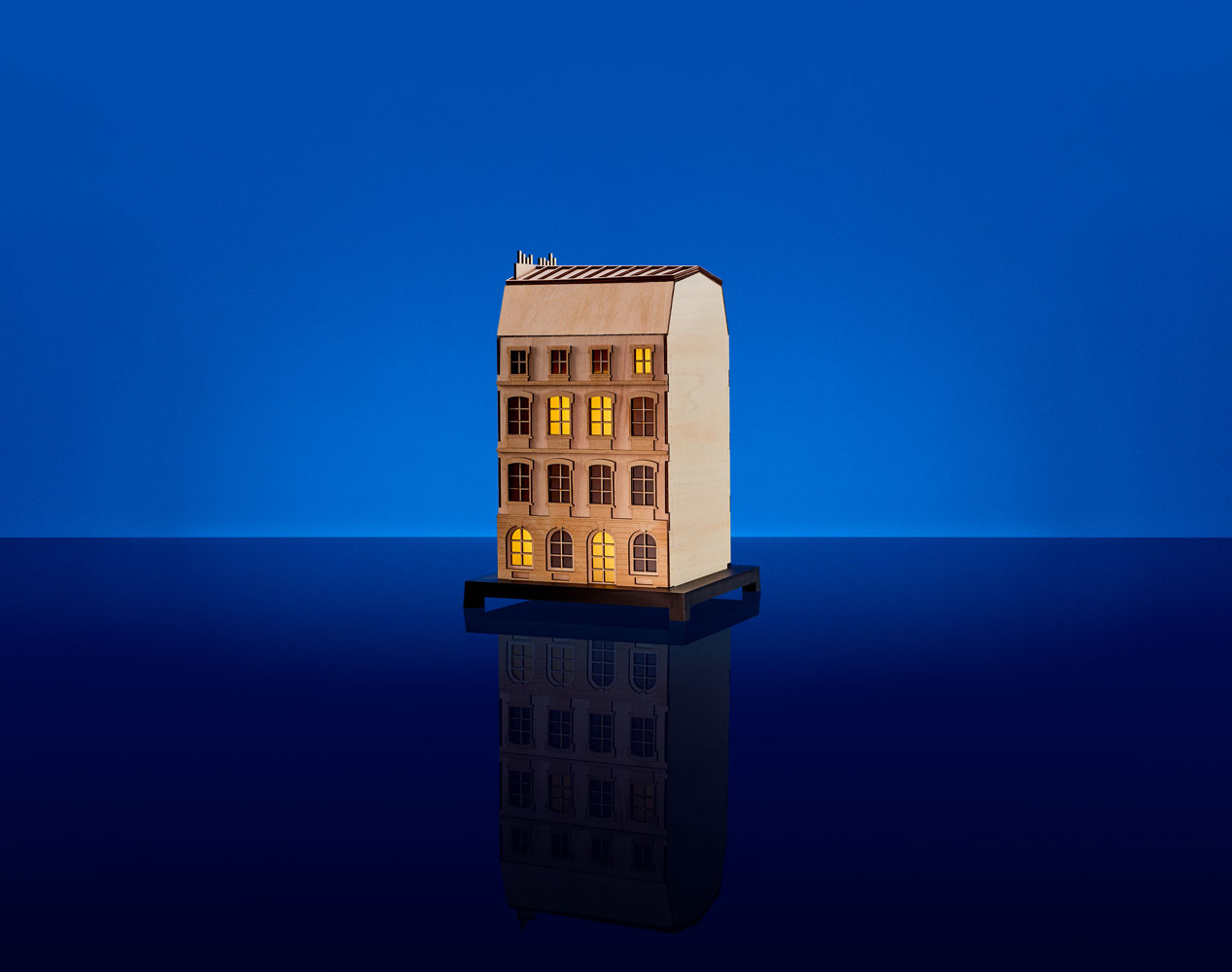 MoMA spotlights France’s booming technology scene in New York
MoMA spotlights France’s booming technology scene in New York -
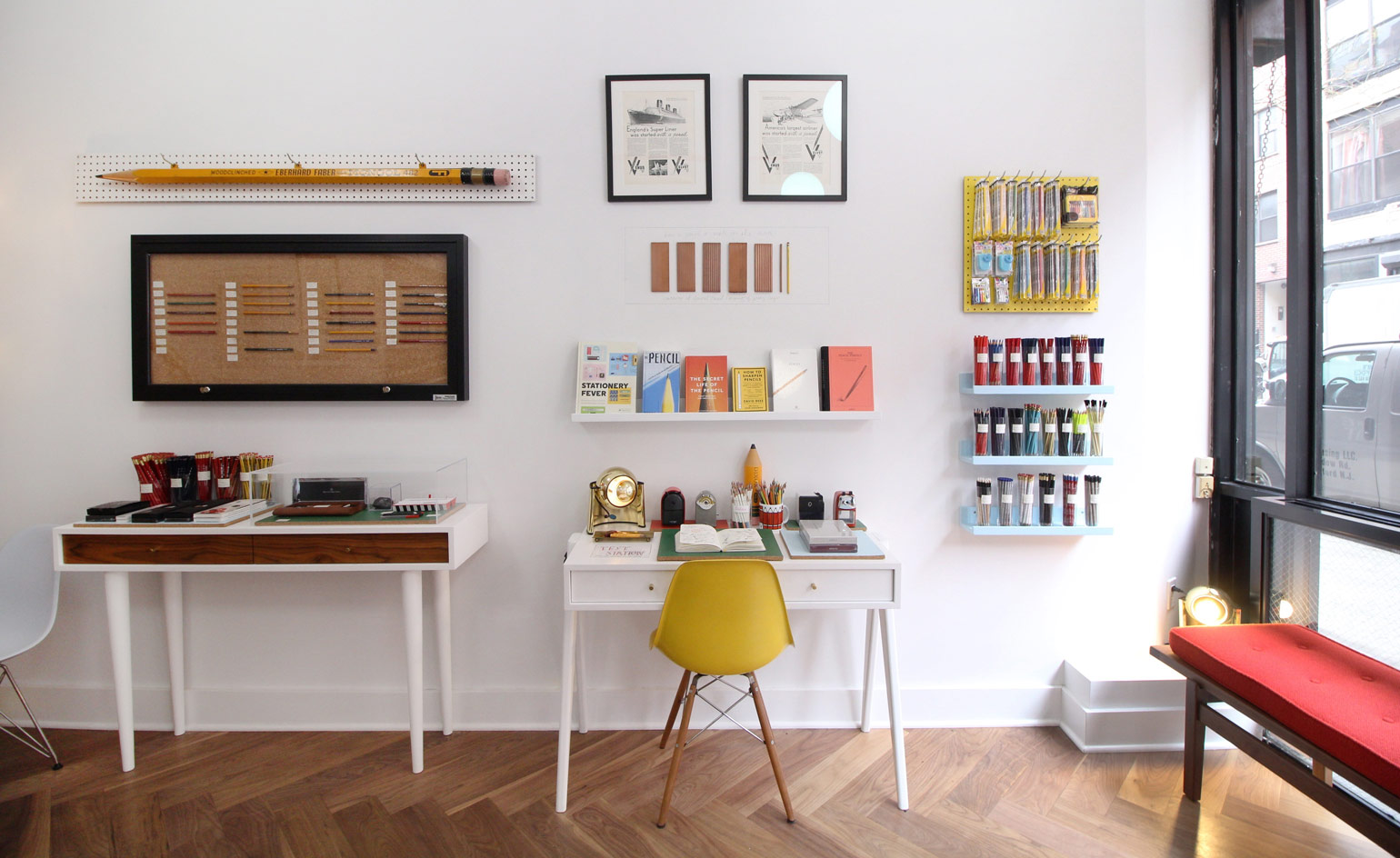 New York’s finest purveyor of pencils champions low-tech design
New York’s finest purveyor of pencils champions low-tech design -
 Making connections: Eero’s new WiFi system is giving internet use a big boost
Making connections: Eero’s new WiFi system is giving internet use a big boost